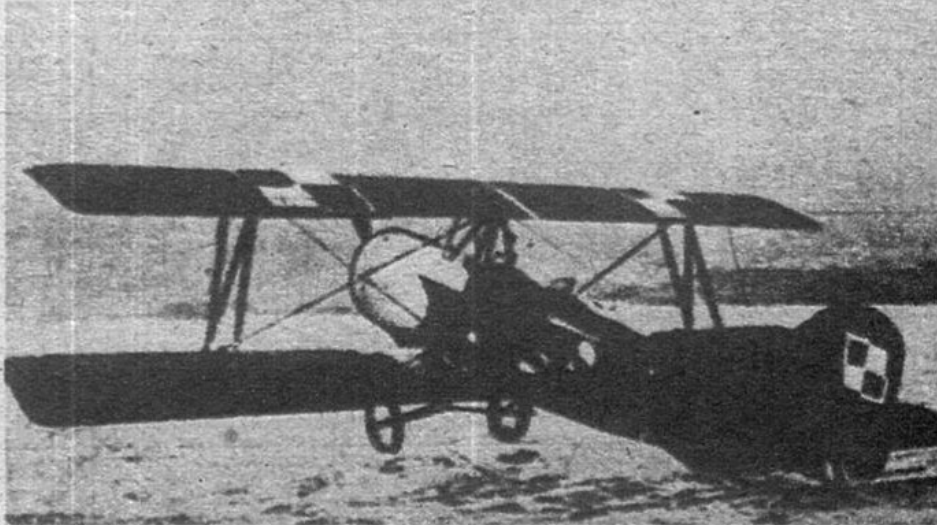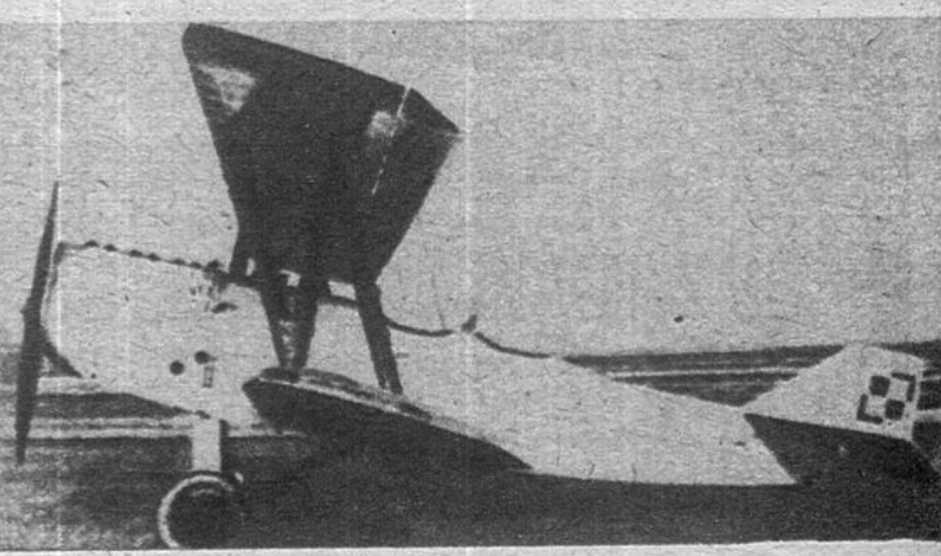Kraków 2015-01-22
Polish Aviation Industry - Part 05
Wielkopolska Wytwórnia Samolotów SA Samoloty.

On August 11, 1923, a joint-stock company was established under the name Wielkopolska Wytwórnia Samolotów - Samolot, which became the second company, after Zakłady Mechaniczne E. Plage and T. Laśkiewicz in Lublin, producing airplanes in Poland. The company was founded on the initiative of the president of the Polish Air Force Association, Czesław Wawrzyniak. On April 27, 1924, the factory was officially consecrated with the participation of the President of the Republic of Poland, professor Stanisław Wojciechowski.
Initially, the company was not located at Ławica Airport. Its offices and design workshops were located in buildings between the airport and the city center, approximately 3 km from the airport. Only later did the company receive workshops and a hangar at Ławica Airport, leasing them from the 3rd Aviation Regiment. Ultimately, WWS Samolot at Ławica Airport had an area of 12.5 ha. Initially, about 100 employees worked in the company. In 1925, as many as 500 people were employed. From 1926, the number of employees decreased.
The managing directors were in turn; Eng. Piotr Tułacz, Eng. Roman Rosinkiewicz, Kazimierz Nencki. The design office was run by Eng. Piotr Tułacz, and from 1926, Eng. Ryszard Bartel. It was after his surname that some structures were named Bartel BM. One of the reasons for setting up the company was in 1923, an order for a liner plane by the Department of Air Navigation. The project was the WZ-VIII-bis aircraft developed by Eng. Władysław Zalewski. However, the prototype was not built and production started.
The first aircraft built at the factory was the Hanriot-14, which was baptized on February 22, 1925. General Włodzimierz Zagórski made the act. It was related to the order for Hanriot training planes received by WWS Samolot in 1924. Semi-finished products delivered from France were used to build machines. In the period 1925-1926, the company built 120 machines, which were initially designated HD-14, and a little later Hanriot H-28. The design office on the basis of Hanriot H-28 developed a sanitary version intended for the transport of one wounded on a stretcher. The plane was designated H-28s. 80 Hanriot H-19 aircraft were also built. In total, about 200 aircraft from France were built.
Initially, airplanes were built under a French license. French ways of organizing work were also used. The first proprietary construction of the plant was the SP-1 sports plane, the lead designer of which was Eng. Piotr Tułacz. The plane was built and flown in July 1926.
In December 1926, another sports plane was built, this time under the leadership of Eng. Ryszard Bartel. The aircraft was designated BM-2. The plane turned out to be better than its predecessor. As early as 1927, an improved training plane, designated the BM-4, was created. The plant received an order for its serial production and in 1928, made 22 machines, in variants a / b / c / d / e. Also in 1928, the BM-5 aircraft, also intended for training, was created. It was mass-produced in the period 1929-1930. The BM-5 was made in a / b / c variants. The BM-4 and BM-5 planes delivered to the Army served in schools in Bydgoszcz and Dęblin and in the Navy Aviation in Puck. In March 1930, another aircraft, designated BM-6, was built, but its production was discontinued.
About 20 planes were built monthly. A maximum of 35 machines could be built in a month. In total, around 17 aircraft and glider structures were designed, several of which were mass-produced. The factory also performed engine repairs at the rate of 30 units / month.


WWS Samolot cooperated with the Poznań Aero Club and actively supported amateur construction creativity. In 1925, several gliders were built there. They took part in the 2nd National Gliding Competition. The HL-2 sports plane designed by Jerzy Medwiecki was also built here.
WWS Samolot took part in the competition for the design of a twin-engine passenger plane, which was announced in 1928 by the Ministry of Communications. Several amateur sports planes were also built here. An unusual structure was a water chaser built by Eng. Michał Bohatyrew from 1924.
On September 12, 1929, a fire broke out as a result of a short circuit in the electrical system. The losses were huge. With great dedication, the factory was rebuilt and the production of airplanes resumed. Nevertheless, in March 1931, the company's management announced its collapse. There were no orders for products. During 5 years of production, 297 aircraft were built. Valuable devices and machines were sold to PZL in Warsaw. Some of the experts left to work in PZL in Warsaw or Podlaska Wytwórnia Samolotów, or possibly to Lublin. The facilities of the former factory were taken over by the 3rd Aviation Regiment in Poznań and military workshops were organized on their basis.
Airplanes Wielkopolskiej Wytwórni Samolotów „Samolot".
Michał Bohatyrew, 1924, water slide.
Hanriot HD-14 (H-28), 1925, training plane, French license.
Michał Bohatyrew "Miś", 1925, glider.
S-I, 1925, glider.
S-III, 1925, glider.
SP-1, July 1926, sports plane, Eng. Piotr Tułacz, study of a fighter plane.
Bartel BM-2 (M-2), December 1926, training and sports plane.
ST-4, 1926, training plane design.
MN-2, 1927, design of a communication plane with the possibility of building a bomb and landing version.
Bartel BM-3, 1927, training plane design.
Bartel BM-4a / b / c / d / e, 1927, training plane.
HL-2 Haroldek, 1927, sports plane.
Bartel BM-5a / b / c, 1928, training plane.
MN-3, 1928, sports plane, constructor Michał Offierski.
O-2, 1928, sports plane.
Bartel BM-6, 1930, training and fighter plane.
MN-5, 1930, training and sports plane, designer Michał Offierski.
Janowski, 1930, sports plane.
Opracował Karol Placha Hetman
